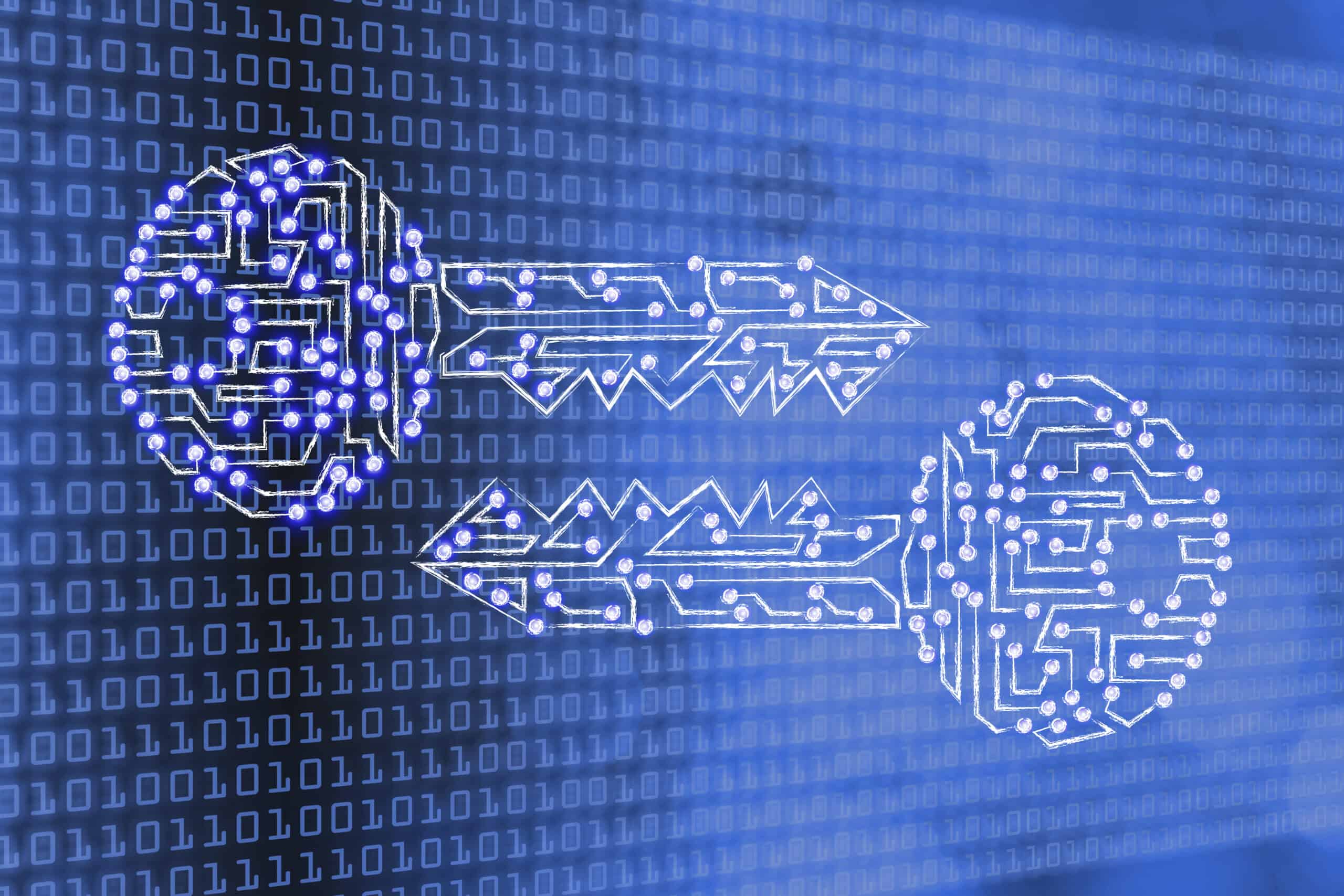Adi Shamir is a renowned Israeli cryptographer who has made significant contributions to the field of computer science. He was born on July 6th, 1952 in Tel Aviv, Israel. He is best known for co-inventing the RSA algorithm, which is widely used for secure data transmission. In addition to his work on cryptography, Shamir has also made significant contributions to computer architecture and algorithms. Throughout his career, he has been recognized for his groundbreaking research and has received numerous awards for his contributions to the field of computer science. His inventions have paved the way for secure online communication and continue to shape the way we protect our digital information today.
Who Is Adi Shamir?
Adi Shamir is an Israeli computer scientist and cryptographer known around the world for his groundbreaking contributions to modern cryptography theory and its practical implementation.
Quick Facts
- Full Name
- Adi Shamir
- Birth
- July 6, 1952
- Net Worth
- N/A
- Awards
- Israel Mathematical Society’s Erdős Prize
- Japan Prize in the field of Electronics, Information and Communication
- Israel Prize for computer sciencesACM Turing Award
- IEEE Koji Kobayashi Computers and Communications Award
- Paris Kanellakis Theory and Practice Award
- Vatican Pontifical Academy PIUS XI Gold Medal
- UAP Scientific Prize
- IEEE W.R.G. Baker Award
- Children
- N/A
- Nationality
- Israeli
- Place of Birth
- Tel Aviv, Israel
- Fields of Expertise
- [“Computer Science”,”Cryptanalysis”]
- Institutions
- Tel Aviv University, Weizmann Institute, University of Warwick, MIT
- Contributions
- RSA algorithm, Shamir’s Secret Sharing scheme, differential cryptanalysis
His most important contribution to the field of cryptology was the co-creation of the RSA public-key cryptography algorithm that uses a public key for encoding messages and a separate private key for decoding them. His other contributions include the invention of Shamir’s Secret Sharing scheme, his co-discovery of differential cryptanalysis, and many other advanced crypto-protocols he wrote and co-wrote that continue to help secure internet communications, blockchains, cryptocurrencies, digital signatures, and other forms of electronic data.
Early Life
Adi Shamir was born on July 6, 1952, in Tel Aviv, Israel, to Daniel and Hannah Shamir. He spent his childhood attending local schools and then studied for his bachelor’s degree in mathematics at Tel Aviv University. He completed his degree in 1973 and enrolled in the Weizmann Institute to study computer science, finishing his master’s degree in 1975 and his doctorate in 1977.
After graduating, he moved to Coventry, England, and spent a year researching cryptology at the University of Warwick. In 1978, he traveled to the United States to continue his research at MIT.
Career
Cryptography Researcher at MIT
While at MIT, Shamir met fellow cryptographers Leonard Adleman and Ronald Rivest. The three teamed up to try to solve a topic close to each of their hearts: public-key cryptography.
Shamir, Adleman, and Rivest had been fascinated by a 1976 paper titled “New Directions in Cryptography,” written by cryptographers Martin Hellman and Whitfield Diffie. The paper presented a broad theory of public-key cryptography but failed to include any practical methods to implement the theory.
In 1978, the same year they met, Shamir et al published a paper discussing the first realistic implementation of a public-key cryptosystem. They called the paper “A method for obtaining digital signatures and public-key cryptosystems.” It spelled out the details of a simple method for encoding a message with a public key that could then be decoded with a linked private key, leaving almost no chance of decoding by any third party that intercepted it. They named their method RSA after the first letters of the last names of the authors.
RSA Data Security
The RSA encryption method took off internationally. It was so successful that in 1983, Rivest, Shamir, and Adleman founded a company, RSA Data Security, that would focus on improving and distributing their algorithm as well as advancing other areas of cryptographic research. RSA Data Security was acquired by Security Dynamics in 1996 for $200 million.
In 2000, when RSA Security’s 1983 patent on its proprietary algorithm began to approach its expiration date, the company and its founders decided to make the RSA algorithm available to the public for free. This enabled anyone to use it in the back end of any program or product and helped make internet communications more secure for everyone.
Thanks to acts of public service like this, Shamir is known more for his inventions than his net worth. While his contributions to cryptography are enjoyed around the world, Shamir’s net worth remains unknown. RSA encryption is still used by millions of people for decoding and encoding online messages and transactions.

Borman Professional Chair of Computer Science at the Weizmann Institute
After he finished his short stay at MIT, Shamir moved back to the Weizmann Institute and continued to work on advancing cryptography.
In 1979, he proposed a new encryption breakthrough he called Shamir’s Secret Sharing scheme. It used a distribution algorithm to share an encryption key among various parties.
In 1980, he was named associate professor in the Weizmann Institute’s Department of Applied Mathematics. By 1984, he was promoted to professor and given tenure.
In the 1980s, Shamir began to work on designing cryptanalytic attacks to break various encryption methods. In 1982, he was able to crack RSA’s major public-key competition, the Merkle-Hellman cryptosystem, using a polynomial-time algorithm.
In 1985, Shamir came up with an identity-based cryptosystem that allowed signature verification without any exchange of keys. In 1986 and 1988, he co-created two separate zero-knowledge identification protocols, the Fiat-Shamir, and the Feige-Fiat-Shamir schemes. These allowed users to sign and authenticate communications without revealing any confidential underlying data points.
In 1989, together with his graduate student Eli Biham, Shamir found a theoretical vulnerability in the Data Encryption Standard (DES), used as standard encryption by the United States government. They were able to modify the algorithm slightly to make it susceptible to a new attack they’d discovered, which they called differential cryptanalysis.
It turned out that the reason this attack didn’t work on the DES without modification was that the NSA had already discovered differential cryptanalysis. The NSA had worked with IBM to modify the DES algorithm to make it less vulnerable but kept the new attack method classified. In 1993, Shamir and Biham published a book on the topic called “Differential Cryptanalysis of the Data Encryption Standard.”
Throughout the 1990s, Shamir continued to develop new cryptographic paradigms with practical uses, including ring signatures, T-functions, and broadcast encryption. He discovered new ways of attacking number-theoretic schemes and block and stream ciphers as well as new ways to protect against power analysis and other common side-channel attacks.
In 1994, he co-invented a visual cryptography scheme that could break up any image, including text, into a potpourri of random pixels and then reassemble it. In 2003, he proposed the TWIRL (The Weizmann Institute Relation Locator) factoring device, a theoretical method of breaking his own RSA algorithm using hypothetical dedicated hardware to speed up factorizing large integers. In 2006, he turned his attention toward cracking SFLASH, the European standard encryption scheme, using practical cryptanalysis.

What Is Adi Shamir Known For?
RSA Cryptosystem
Before Shamir, Rivest, and Adleman’s breakthrough in the late 1970s, the existing cipher systems were all based on symmetric-key cryptosystems, which use the same key to encode and decode messages. This method is impractical for two reasons:
- Before you can use this method, you have to find a secure way to send your key to anyone you want to communicate with.
- It’s difficult to keep your key secret when all your recipients need it to open your messages.
Public-key cryptosystems, on the other hand, use decryption keys that are distinct from their paired encryption keys. This allows you to make your encryption key public so you can send it to anyone and still keep your decryption key private and safe. Rivest, Shamir, and Adleman figured out a cryptographic algorithm based on one-way mathematical problems that finally made it practical to generate linked pairs of public and private keys.
As an RSA user, you start by generating a public key based on a pair of prime numbers with plenty of digits plus an auxiliary function. You then publish your public key but keep its founding prime numbers a secret. Anyone will be able to use the public key to encrypt messages and send them to you, but no one will be able to decode those messages unless they know the original prime numbers.
RSA’s security relies on what’s known as the factoring problem. It’s nearly impossible to factor the product of two sufficiently large prime numbers using today’s computing power, although quantum computing may change the paradigm in the future.
Shamir’s Secret Sharing Scheme
Secret sharing splits private data into small shares and distributes those pieces to the members of any group. Shamir’s Secret Sharing scheme is based on an algorithm that improves and safeguards the secret sharing method.
In the original method, if any member of the original group is unavailable, the data cannot be decoded. Shamir’s algorithm introduces toleration for error that makes the method more robust. Once the information is split into shares and distributed, it may be reconstructed by a given fraction of the total instead of requiring the participation of all original shareholders.
Adi Shamir: Marriage, Divorce, Children, and Personal Life
Net Worth
Adi Shamir’s net worth is currently unknown. Unreliable online estimates of his wealth range from $1 million to $2.3 billion.
Marriage
Adi Shamir remains unmarried & continues to dedicate all his energies to the field of cryptography.
Children
Adi Shamir has no children.
Adi Shamir: Awards and Achievements
Israel Mathematical Society’s Erdős Prize
In 1983, Shamir was awarded the Israel Mathematical Society’s Erdős Prize in Mathematics. The Erdős Prize is given annually to outstanding young Israeli mathematicians generally under the age of 40.
IEEE W.R.G. Baker Award
In 1986, Shamir received the IEEE’s W.R.G. Baker Award. The annual Baker Award recognizes the most exceptional work published by the IEEE in the previous year.
UAP Scientific Prize
In 1990, he was given France’s UAP Scientific Prize for his remarkable work in computer science. The UAP Prize was founded by France’s leading insurance broker, the l’Union des Assurances de Paris.
Vatican Pontifical Academy Pius XI Gold Medal
In 1992, Shamir was honored with the Pius XI Gold Medal directly from the Holy Father himself. The Pontifical Academy of Sciences’ Pius XI Medal intends to promote scientific research by annually commending young scientists with exceptional promise.
Paris Kanellakis Theory and Practice Award
In 1996, Shamir split the Paris Kanellakis Theory and Practice Award with his other public-key cryptography co-inventors, Rivest, Adleman, Hellman, Merkle, and Diffie. The Paris Kanellakis Award highlights new theories in computer science with significant practical implementations.
IEEE Koji Kobayashi Computers and Communications Award
In 1998, Shamir was given the IEEE’s Koji Kobayashi Computers and Communications Award, which recognizes important contributions that integrate communications and computing.
ACM Turing Award
In 2002, Shamir, Rivest, and Adleman were awarded ACM’s Turing Award, along with its prize of $1 million, for their practical breakthroughs in public-key cryptography. The Turing Award is commonly called the Nobel Prize of computing.
Israel Prize
In 2008, the State of Israel honored Shamir with their Israel Prize for his work in computer science. The Israel Prize is considered Israel’s most important cultural award.
Japan Prize
In 2017, Shamir received the Japan Prize in the Electronics, Information, and Communication category. The Japan Prize is an annual award given to individuals and groups who have helped bring peace and prosperity to humankind by advancing science and technology.
Honorary Degrees and Fellowships
In honor of Shamir’s many contributions to cryptology, he has been given membership in many different academic societies around the world, including:
- 1998 – Israeli Academy of Science
- 2004 – International Association of Cryptographic Research
- 2005 – U.S. National Academy of Sciences
- 2007 – Academia Europaea
- 2018 – Royal Society of London
- 2019 – American Philosophical Society
He has also been bestowed multiple honorary degrees from prestigious universities, including:
- 2003 – Honorary doctorate from École Normale Supérieure
- 2009 – Honorary doctorate in mathematics from the University of Waterloo
Adi Shamir: Published Works and Books
Academic Papers
According to Google Scholar, Shamir has published more than 300 academic papers so far during his career in cryptology. Some of the most influential papers include:
- How to Share a Secret (1979)
- A Method for Obtaining Digital Signatures and Public-Key Cryptosystems (1983)
- Identity-Based Cryptosystems and Signature Schemes (2000)
- How to Prove Yourself: Practical Solutions to Identification and Signature Problems (2000)
- Differential Cryptanalysis of DES-Like Cryptosystems (2001)
- How to Leak a Secret (2001)
- Weaknesses in the Key Scheduling Algorithm of RC4 (2001)
- Differential Fault Analysis of Secret-Key Cryptosystems (2006)
- Visual Cryptography (2006)
Differential Cryptanalysis of the Data Encryption Standard
In 1993, Shamir co-authored a book with his graduate student, Eli Biham. Differential Cryptanalysis of the Data Encryption Standard presented their discovery of differential cryptanalysis, which they were able to use to crack the DES algorithm faster than typical brute force methods.
Adi Shamir: Quotes
- “Crypto will not be broken, it will be bypassed.”
- “The cryptocurrency community hasn’t decided whether they want to be anarchist rebels or to replace the establishment.”
The image featured at the top of this post is ©faithie/Shutterstock.com.








